- São Gabriel da Cachoeira, in northern Amazonas state, is recognized as Brazil’s most Indigenous municipality: an estimated 90% of its population is Indigenous, accounting for both its urban and rural areas; the urban area alone is 58% self-declared Indigenous.
- Spread across an area the size of Cuba, São Gabriel da Cachoeira has a history marked by the arrival of Brazilian military forces in 1760 and subsequently Catholic and Protestant missionaries, organized Indigenous social movements, as well as national and international NGOs focused on defending the environment and the Indigenous peoples.
- According to the census, there are 32 indigenous ethnic groups in São Gabriel da Cachoeira, many of them unknown in the rest of the country, such as the Koripako, Baniwa, Baré, Wanano, Piratapuya, Tukano, and Dãw people.
- The municipality is the only one in the country with four official languages, in addition to Portuguese: Baniwa, Tukano, Nheengatu and Yanomami. But despite its cultural and ethnic diversity, there are frequent reports of discrimination against Indigenous people.

SÃO GABRIEL DA CACHOEIRA, Brazil — Using the selfie camera on her phone as a mirror, Penha Góes Figueiredo Yanomami applies red paint on her face. It’s a tradition inherited from her people, the Indigenous Yanomami of the Amazon; the paint is called urucum in the Tupi language, and comes from the seeds of the achiote tree (Bixa orellana). It’s usually used on festive days in her village, but this time, Penha Yanomami, 44, is painting her face while sitting in a hammock at the Yanomami support house in São Gabriel da Cachoeira, a municipality in the northwest of Brazil’s Amazonas state. Lying on the banks of the Rio Negro, this town of 46,000 inhabitants is known as Brazil’s most Indigenous municipality.
Life in an urban setting hasn’t distanced Penha Yanomami from her people’s traditions, and the urucum on her skin reaffirms the ancestral habits. Born in the village of Maturacá, in the Yanomami Indigenous Reserve about 140 kilometers (90 miles) northeast of São Gabriel da Cachoeira, Penha Yanomami works today as a health agent for the Indigenous health board that covers the Upper Rio Negro region. She has lived in São Gabriel da Cachoeira for a year and a half now, since it’s the closest urban center to the community she serves, and in her spare time she visits the support house reserved for the Yanomami.
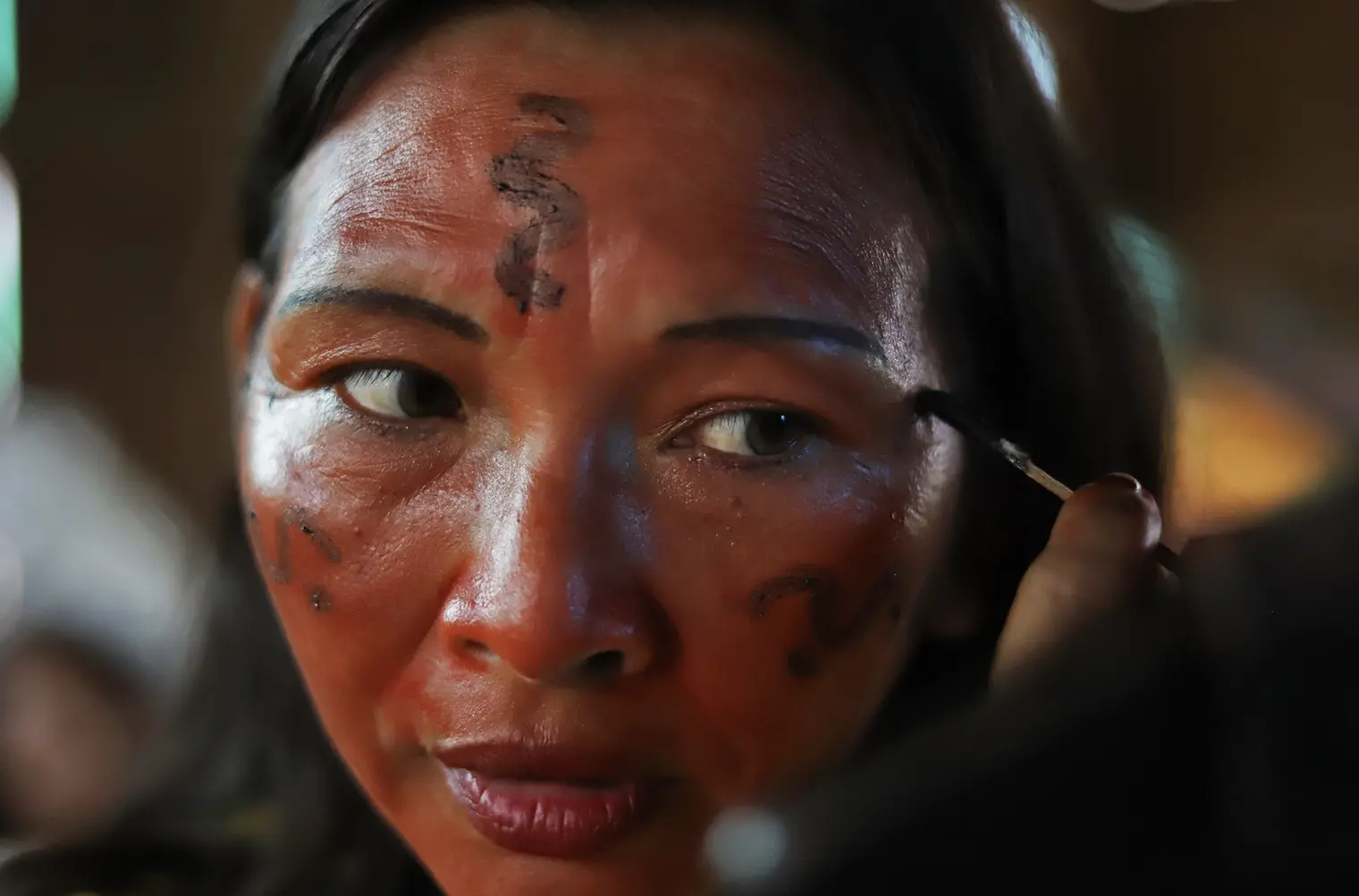
“I’m not [here] because I want to be, I came to work for the people who need me as an interpreter in the town,” she says. With a sixth-grade education, Penha Yanomami studied Portuguese in school and, beyond language, she helps Indigenous people to deal with non-Indigenous issues in the municipality.
Like Penha Yanomami, many Indigenous people live between the urban environment and the Indigenous communities. While some have already settled permanently in the municipality, many still maintain a home in the villages. São Gabriel da Cachoeira’s population was 46,303 in 2020, according to the Brazilian Institute of Geography and Statistics (IBGE). IBGE has not released specific numbers of Indigenous people, but local estimates point to approximately 90% of the municipality’s population, considering the urban and rural areas. According to the latest census, published in 2010 (the next census is expected in 2022), 11,000 Indigenous people live in São Gabriel da Cachoeira’s urban areas (58% of total residents in urban areas). (See the map below.)
In this municipality that spans nearly 110,000 square kilometers (42,500 square miles) — an area the size of Cuba — Indigenous people from 32 ethnic groups live together, according to census data. Many of them are unknown in the rest of the country, such as the Koripako, Baniwa, Baré, Wanano, Piratapuya, Tukano, and Dãw people.
The chart below only shows 23 ethnic groups because IBGE did not disclose the number of Indigenous peoples of the nine other ethnic groups, in order to preserve their identity, according to demographic criteria. The Federation of Indigenous Organizations of Rio Negro (FOIRN) works with a number of the 23 ethnic groups.
But the fact that the municipality has an Indigenous majority hasn’t always translated into a greater appreciation for ancestral cultures. In contrast to the cultural and ethnic diversity, there are frequent reports of Indigenous peoples being discriminated against.
Penha Yanomami speaks with sadness of the ill-treatment often received by her people. This includes not only discrimination against Indigenous people in local commerce but also in public institutions. Nevertheless, she says she has never personally suffered from prejudice: “I don’t even know what prejudice is. I don’t know if anyone did it to me. I am myself, I am Yanomami.”
Franci Baniwa, an Indigenous anthropologist of the Baniwa people and doctoral student at the Federal University of Rio de Janeiro (UFRJ), says the experience of Indigenous peoples in São Gabriel da Cachoeira’s urban environment is tied to the hierarchical structure of the ethnic groups themselves, in addition to historical grievances within Indigenous cultures themselves, and the friction that arises when people migrate here from other regions, who often don’t know the area well.
But since the 1980s, and especially after Brazil’s new constitution was issued in 1988, a movement to value local culture has grown, Franci Baniwa says. This movement seeks to reinforce Indigenous self-esteem and lead to the self-identification of a greater number of Indigenous peoples.
“If you leave a community, you carry with you a whole life, our fields, [manioc] flour, fish, game,” Franci Baniwa says. “You carry your experience and share it in a world that is not yours. I always say: having your world and having Western knowledge means that you have two worlds in your hand to grow together.”
‘Indigenous forever’
Adelina Sampaio Desana, 28, of the Desana ethnic group, was born in the Balaio Indigenous Reserve, on the outskirts of São Gabriel da Cachoeira. She moved to the town in 2008 to study. The experience led her to join an Indigenous movement that advocates for the appreciation of traditional customs. Rising to a leadership role at a young age, Adelina coordinated the youth department at FOIRN until December 2020.
“The cultural shock was quite impactful for me,” she says. “I felt this big prejudice at school: ‘Look at that Indigenous woman, she doesn’t know how to speak.’ Sometimes I wanted to speak correctly and ended up making more mistakes. São Gabriel is the most Indigenous town [in Brazil], but it is prejudiced.”
Even so, Adelina Desana says she has managed to reconcile urban life with some of her Indigenous customs, such as her diet, which includes the rural staples of fish, manioc flour, açaí berries and other fruits.
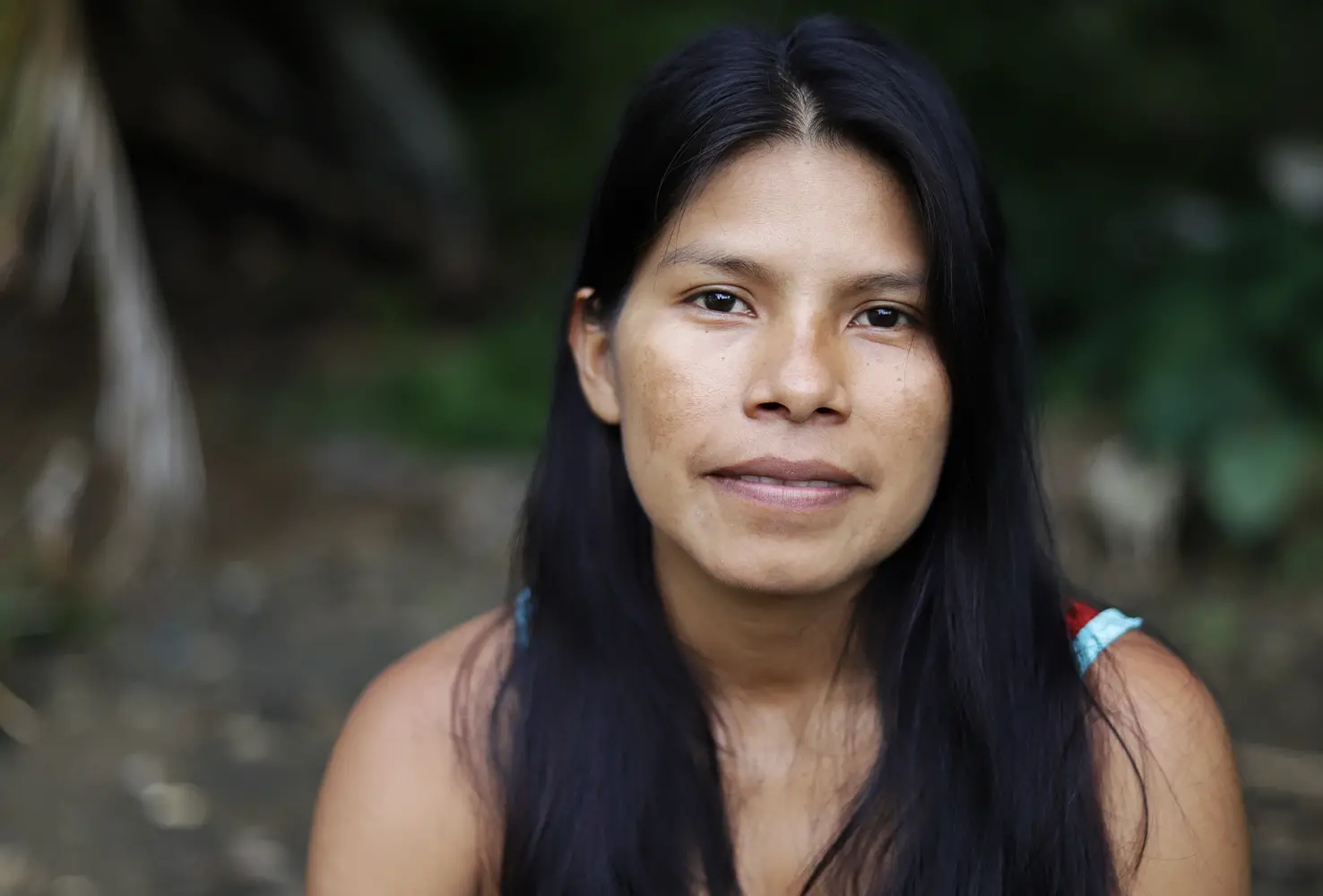
Valdeson Miranda Delgado Baré, 22, from the Baré ethnic group, also tries to reconcile the two different worlds that he straddles. Born on Cururu Island, in the Middle Rio Negro region, he studies at the State University of Campinas (Unicamp) and lived in student housing in the city of Campinas, in São Paulo state, until the COVID-19 pandemic broke out. He has returned to São Gabriel da Cachoeira for what he hopes will be a temporary break.
He refutes the common perception that a person is no longer Indigenous because they live in the city. “We sometimes discuss this at the university, in Campinas. Since I already know how to use my computer, I own a laptop, a tablet, glasses, and a watch, they say I’m no longer Indigenous. That does not exist. We are Indigenous forever,” Valdeson says.
When he travels to São Paulo, he says he brings manioc flour in his suitcase and he has even caught tanajura ants in the student housing to fry and eat. “There are many flying ants [there]. My colleagues and I take them by hand. You have to pick up the ant head so as not to be bitten and put it in the little pot to cook,” says Valdeson Baré, who speaks Nheengatu, the lingua franca of the region.
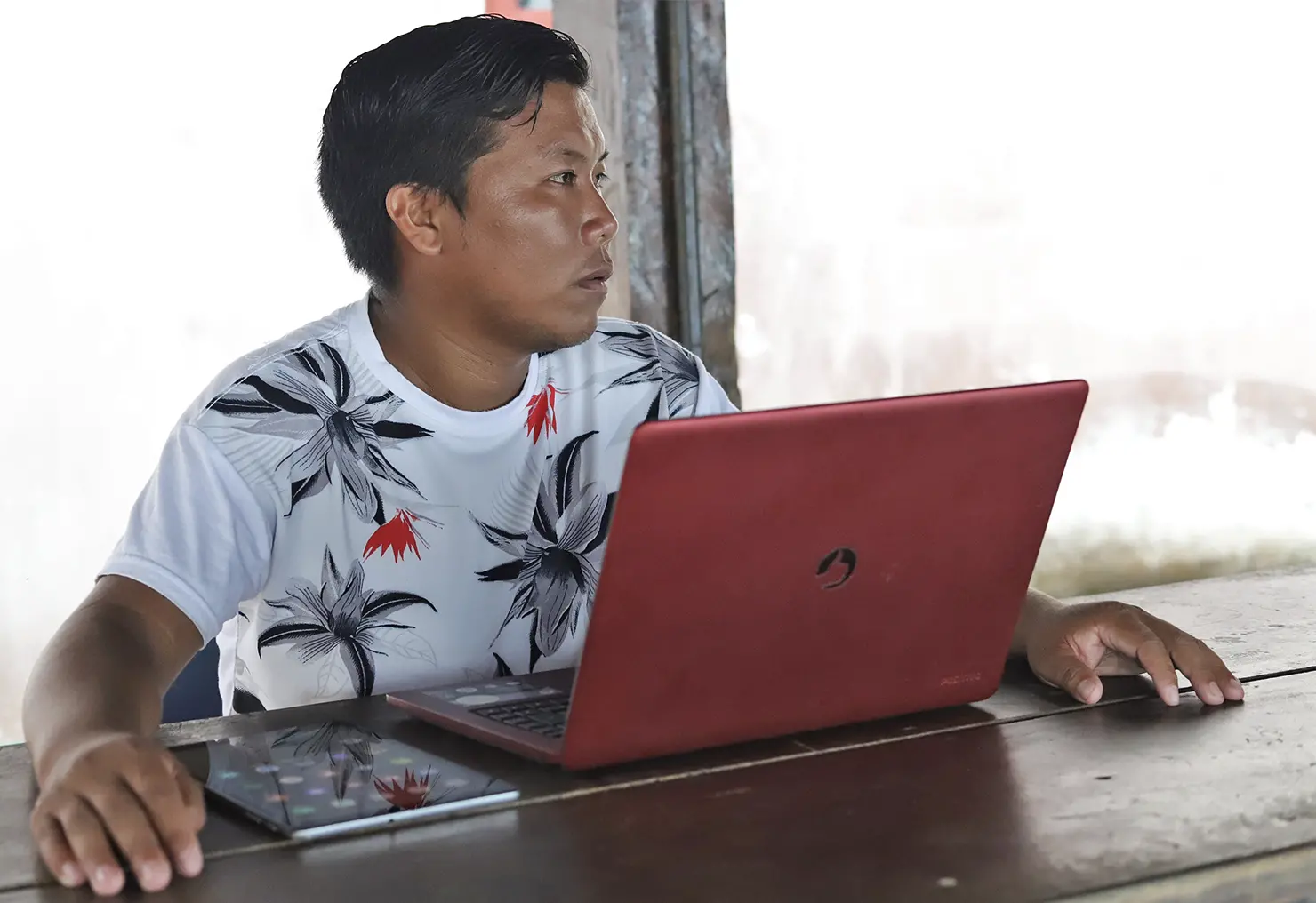
The 2010 census, the first to map out the Indigenous presence across the whole of Brazil, revealed remarkable Indigenous diversity: 305 ethnic groups and 274 languages. Anthropologist Franci Baniwa says the educational system is key in the process of expanding knowledge about Indigenous culture and its appreciation. “The study of history in the country should include Indigenous peoples: how many ethnic groups, how many languages, where they live, which Indigenous territories there are,” she says.
Born in Assunção do Içana, an Indigenous community in São Gabriel da Cachoeira, Franci Baniwa today lives in Rio de Janeiro, where she is pursuing her doctorate. “There is a profound lack of knowledge about the region of São Gabriel. People still ask if we’re undressed. It’s not because I’m Indigenous that I sleep on top of a banana tree or wear banana-leaf clothes. We wear clothes and have the traditional apparel for ceremonies. When I’m in the village, I go to the fields with my mother, pluck, carry and dry manioc, and catch fish. I also write when I’m there,” Franci Baniwa says. She speaks Nheengatu and Portuguese.
She demands improvement of infrastructure in the villages and support for young Indigenous who venture out of their communities. “Many Indigenous people continue to leave their communities to study and work, but they do not always find the right conditions. They end up exposed to problems such as alcoholism and early pregnancy,” Franci Baniwa says.
In 2017, the federal government signed a commitment to build 50 schools catering to the Indigenous population of the Rio Negro region; São Gabriel da Cachoeira is on the list of municipalities that will host 16 schools. The stages of the physical and pedagogical project have already been completed, but the works have not yet started. After pressure from the Federal Public Ministry (MPF), the government reaffirmed its commitment in April this year, with 40 million reais ($7.8 million) in funds promised to be released, but said the works will only start when the villages are reopened after the pandemic.
A synthesis of the Indigenous Brazil
One of the main Indigenous beliefs of the region where São Gabriel da Cachoeira was founded tells of a large snake climbing the headwaters of the Rio Negro to create humanity, with the various ethnic groups settling in certain points that are considered sacred: rocks, waterfalls, rivers, among others.
While the cultural and historical diversity of São Gabriel da Cachoeira is manifested today in its great ethnic diversity, the lack of knowledge of the local culture ends up triggering prejudice from immigrants from other regions of the country, including soldiers, civil servants and their families. Many of those who arrived, and continue to arrive, know nothing about the local culture, Franci Baniwa says. “I believe the biggest prejudice comes from outsiders. Many do not understand the diversity, the landscape full of sacred places with a story behind them.”
The region’s history is quite complex and involves a series of violent episodes that boosted Indigenous migratory movements. The first contacts with non-Indigenous peoples took place in the 17th century, mostly when Portuguese colonizers hunted for fugitive slaves. This is detailed in the map book Indigenous Peoples of the Upper and Middle Rio Negro, jointly edited by the Instituto Socioambiental (ISA), a nonprofit advocating for the environment and Indigenous rights, and the Indigenous coalition FOIRN.
In 1760, military forces established a presence in the region by building a fort, starting the construction of the village that would later be called São Gabriel da Cachoeira.
Economic cycles and migratory movements that exploited and impacted the Indigenous way of life have defined the region. That was the case with the so-called rubber cycle, which lasted until the mid-20th century, exploiting Indigenous and riverine community labor to produce rubber from Amazonian trees. At the beginning of the last century, Catholic missionaries also reinforced the colonizing presence in the region. “They banned the use of the [native] language, the rituals, it was a period of great cultural loss,” Franci Baniwa says.

Modern-day São Gabriel da Cachoeira faces a series of social problems, such as the lack of basic sanitation, with only 4% of the town’s sewage system considered adequate for Indigenous people living in its urban areas, according to IBGE data. (See the details in the accompanying map.) Illegal mining on Indigenous reserves also exerts strong pressure on the municipality, where there are also high incidence rates of infectious diseases such as dengue and malaria, and suicides.
Even in the face of so many problems, the municipality’s cultural diversity resists and stands out. Walking through the city’s commercial center, it’s not unusual to find Yanomami families with the mother carrying the children in fabric slings, as is customary in the villages. It’s also common to hear people speaking Indigenous languages on the streets. In addition to Portuguese, the municipality is the only one in the country that has four other official languages: Baniwa, Tukano, Yanomami, and Nheengatu.
Every year, Unicamp holds an Indigenous entrance exam to the university, bringing the tests to the municipality of São Gabriel da Cachoeira, where it maintains a teaching extension that trains Indigenous health professionals. The headquarters of the Federal Institute of Amazonas (IFAM) in São Gabriel da Cachoeira carries out its selection process with tests in the three official Indigenous languages. The COVID-19 pandemic, however, changed the way in which these entrance exams are applied.
The Federal University of Minas Gerais (UFMG) also maintains a teaching extension course in the region to train Indigenous educators. The course acknowledges the demand from schools for educators and school material that take into account Indigenous cultures.
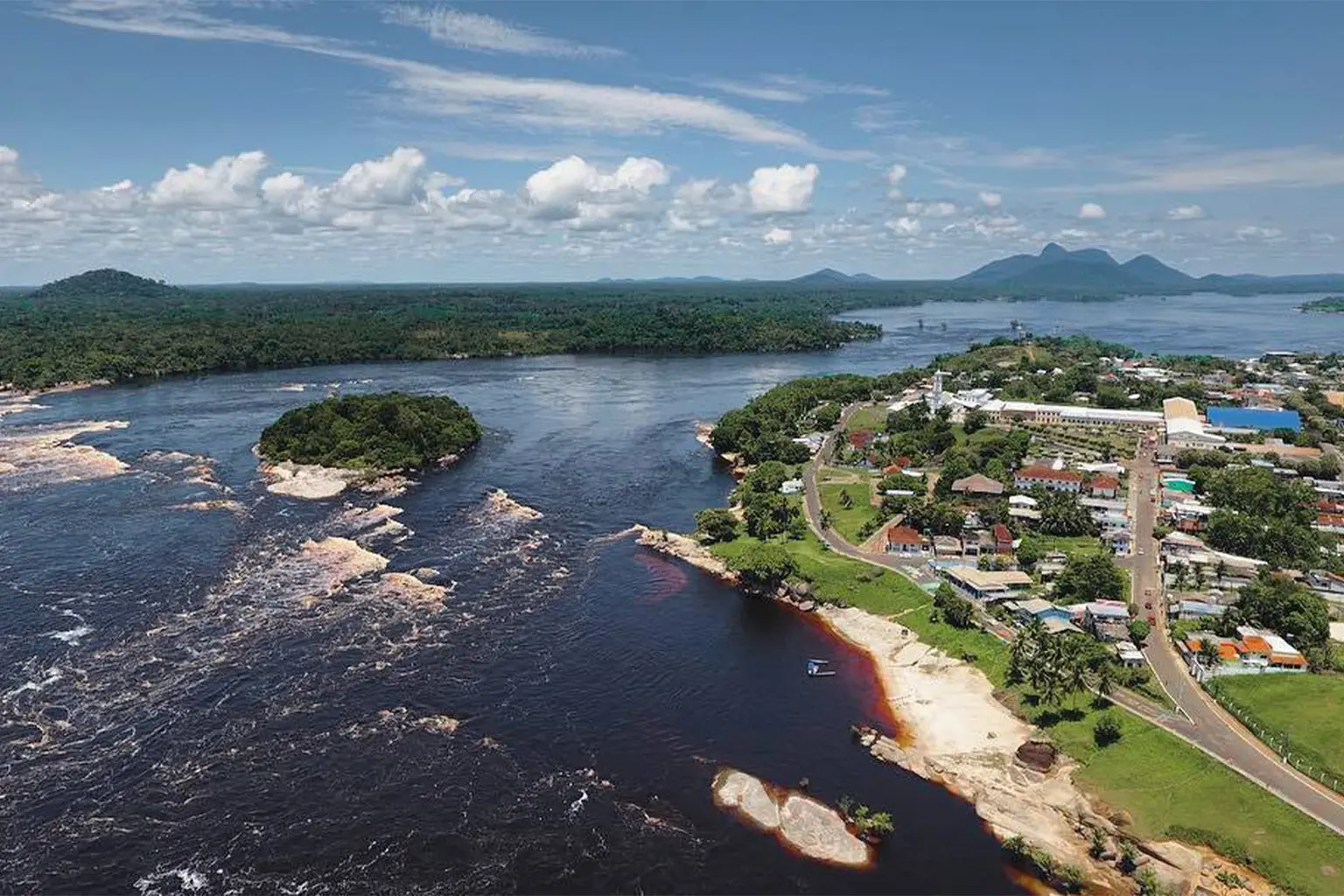
Visitors to São Gabriel da Cachoeira are guaranteed a unique experience from the very start. The municipality is only accessible by plane or boat. It’s a two-hour flight from Manaus, the Amazonas state capital, with the green carpet of the Amazon forest, intersected by rivers, visible below on clear days. On the approach, the ground rises as mountains and hills emerge. Rounding out the landscape are the beaches and rip tides of the Rio Negro.
The beauty of the landscape contrasts with the precarious infrastructure: There are several unfinished buildings, neglected sidewalks, trash spilling over, and open sewers.
The municipality is surrounded by villages, some hard to access and others located very close to the urban perimeter. Arriving at the main beachfront, there are kiosks and dance clubs that play the local musical genre called forró, and the white-sand beach of the Rio Negro. On the opposite riverbank, the forest comes into view, along with one of the nearest Indigenous communities, called Waruá, home to the Dãw people. Entry into Indigenous territories is restricted and requires authorization from FUNAI, the federal agency for Indigenous affairs. The beach is often frequented by Indigenous people on their small motorboats, carrying their families and also goods for sale.
The local economy is still precarious. The most recent figures showed that 15,502 Indigenous people in the city don’t have a monthly income. Complementary data from IBGE’s 2010 census show that 770 Indigenous people are employed as civil servants or military personnel, a far smaller number proportionally than the 810 white and brown people working in the civil service or armed forces.
To outsiders, daily life of the city can be surprising. The natural beauty on the banks of the Rio Negro, the precarious infrastructure, the Indigenous inhabitants, the traditional languages, and the young people driving around with loud music blaring all live side by side. Add to that the military trucks on the streets. The military has a strong presence here because the municipality borders two neighboring countries: Colombia and Venezuela.
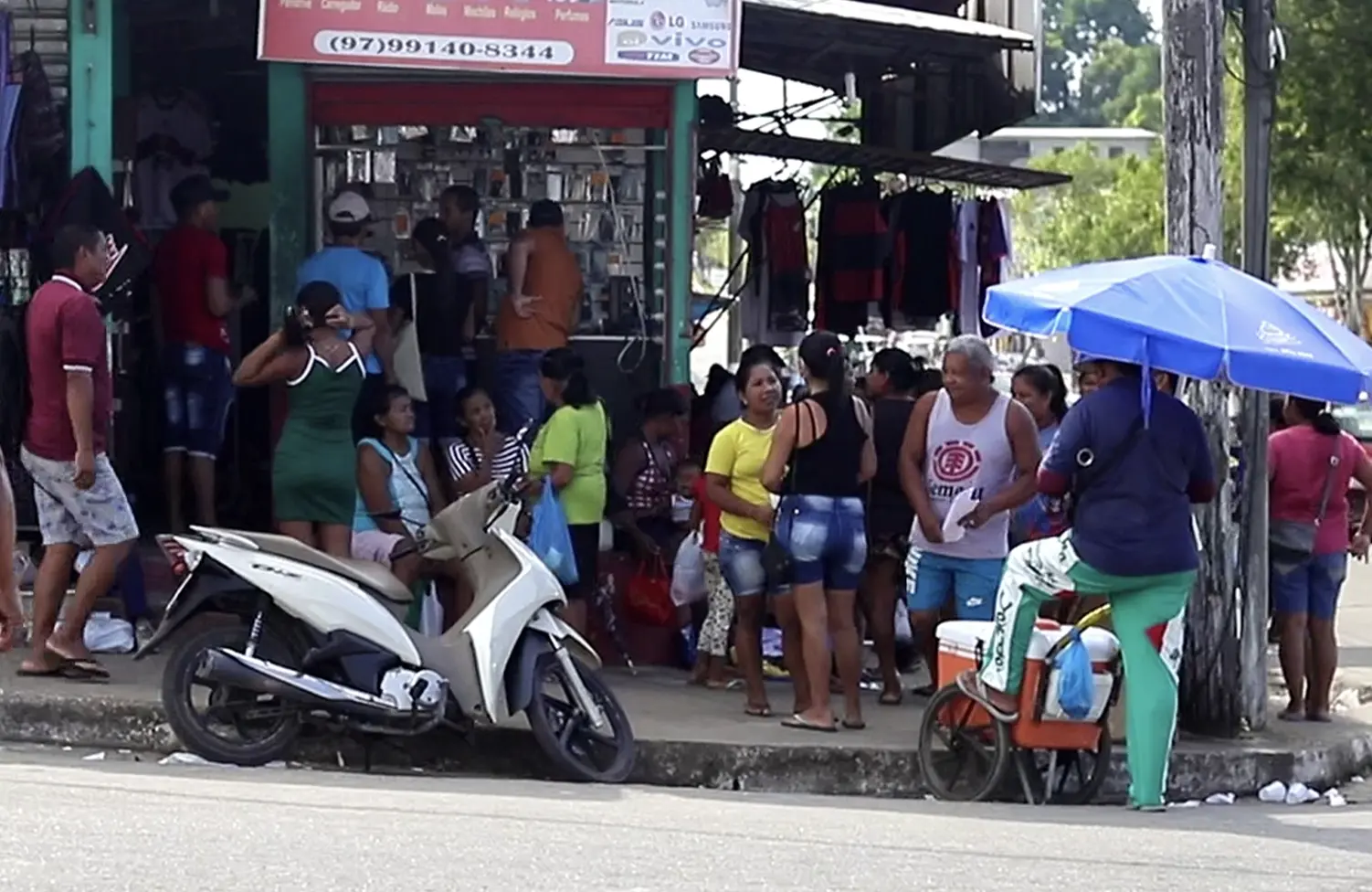
The municipal market can also provide experiences that are often considered unique. One can buy a bag of edible ants, often still alive, displayed for sale in bowls or buckets. There’s also the traditional tucupi sauce, extracted from a type of wild cassava, and beiju, a sort of crepe made with flour from another type of cassava. Market vendors also serve up a traditional Rio Negro dish of fish broth with tucupi and pepper, called quinhampira.
On Sundays, there’s the Feira dos Tuyuka (Tuyuka street market), another São Gabriel da Cachoeira tradition, where the town’s diversity, with its cultural richness and its contrasts, becomes evident. It’s possible to watch a performance of a traditional dance, Cariçu; drink an Indigenous fermented drink, caxiri; and eat traditional dishes such as quinhampira and game meat. These traditional customs coexist with other cultures, to the sound of regional or even Colombian rhythms.
For sociologist José Carlos Matos Pereira, a postdoctoral researcher in social anthropology at the Federal University of Rio de Janeiro (UFRJ), “it is key to understand that there is no opposition of experiences for Indigenous people.”
“In the Indigenous mind, there is no opposition between village and city. There is no opposition between rural and urban. The native people are living, and they live their lives in the conditions that life offers. There are some places that will offer a better living condition for them to gather together, for them to reproduce, for them to plant, for them to practice their rituals, for them to fish. In other places, conditions are quite adverse,” says Pereira, who runs the university’s Social Movements Memory Program.
Cenaide Pastor Marques Lima Tuyuka, 43, is one of the Indigenous people in charge of the Tuyuka Ethnic Indigenous Association–Residents of São Gabriel da Cachoeira. He moved here in his teens to study. Pastor Tuyuka, as he is known by locals, speaks Portuguese, Spanish, Tuyuka, Tukano and Makuna.
Born in Vila São João Bosco, on the Tiquié River, also in the municipality of São Gabriel da Cachoeira, on the Brazil-Colombia border, he says he works as a translator between two worlds, facilitating access for his relatives to the knowledge of how to live in the city, including guidance on how to get government-issued documents.
As he buzzes between the job of managing the Tuyuka street market and talking to Mongabay’s reporting team, Pastor Tuyuka reflects on the origin of the peoples. “We are original Indigenous people. How are we going to be non-Indigenous? People are born Indigenous and will continue to be Indigenous,” he says.
—Translated by Juliana Ennes
Additional reporting by Daniela Villegas, a member of the Tukano ethnic group and literary student at Unicamp; and Karla Mendes and Rafael Dupim. The photographer commissioned for this story, Paulo Desana, is also Indigenous, from the Desana people.
Maps: Ambiental Media / Juliana Mori.
Infographics: Ambiental Media/Laura Kurtzberg.
Data research and analysis: Yuli Santana, Rafael Dupim and Ambiental Media.
Banner image: Cenaide Pastor Marques Lima Tuyuka is one of the Indigenous people in charge of the Tuyuka Ethnic Indigenous Association–Residents of São Gabriel da Cachoeira. He speaks Portuguese, Spanish, Tuyuka, Tukano and Makuna and says he works as a translator between two worlds, facilitating access for his relatives to the knowledge of how to live in the city, including guidance on how to get government-issued documents. “We are original Indigenous people. How are we going to be non-Indigenous? People are born Indigenous and will continue to be Indigenous,” he says. Image by Paulo Desana for Mongabay.









